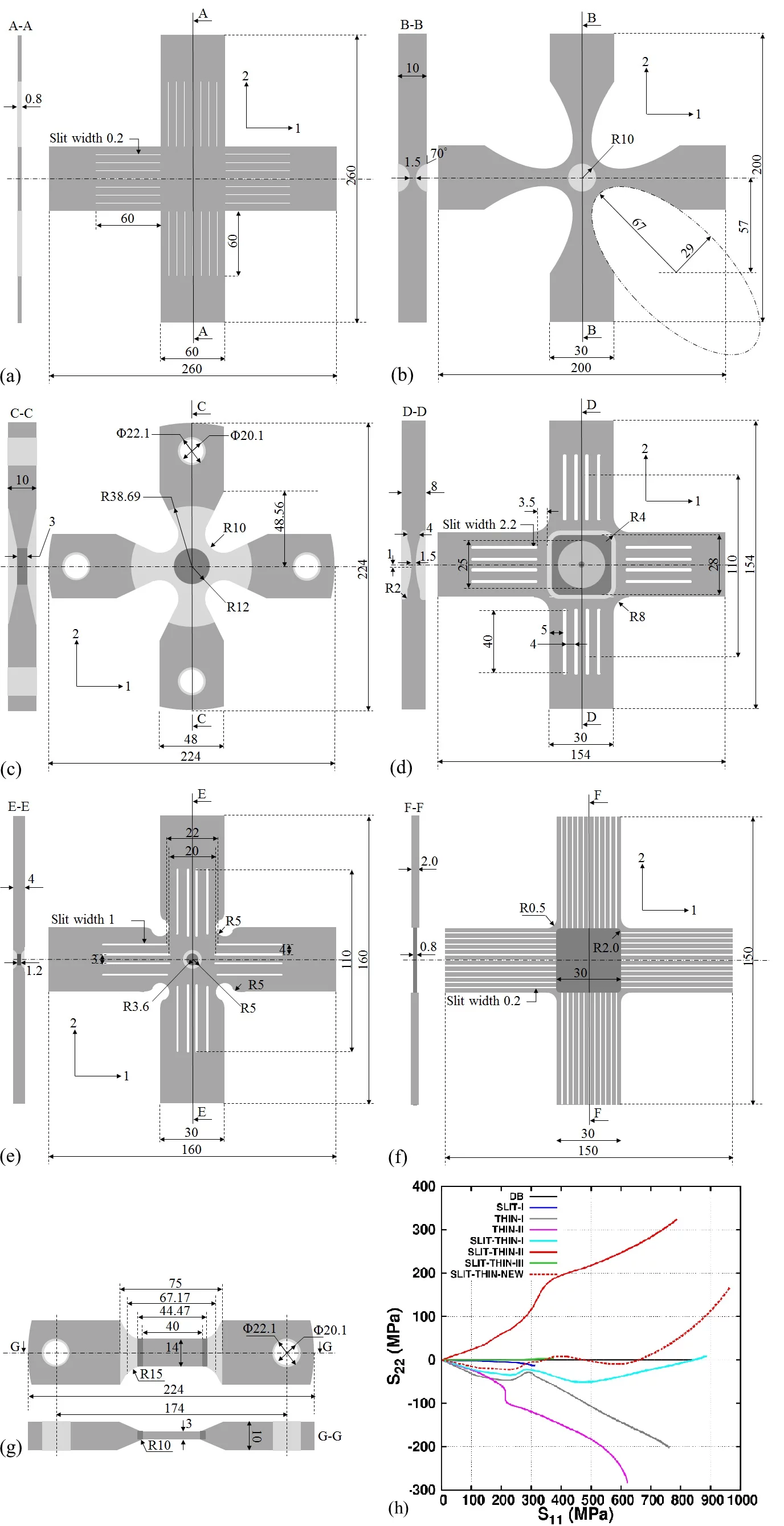The stress and strain relationship in the gauge region of six cruciform geometries is studied: the ISO standard geometry with slits in arms, two geometries with thinned gauge areas, two geometries with thinned gauge areas and slits in arms, and one modified ISO standard geometry with slits in arms and a thinned gauge area. For all the geometries, finite element simulations are performed under uniaxial loading to compare the plastic strain, the von Mises stress distribution and the in-plane stress evolution. Results show that less plastic strain can be achieved in the gauge of the two ISO standard geometries. For the remaining cruciform geometries, a strong non-linear coupling between applied forces in arms and gauge stresses is generated. The evolution of this non-linear coupling depends on the geometry type, applied biaxial load ratio and the elastic-plastic properties of the material. Geometry selection criteria are proposed to reduce this non-linear coupling.
Contact
Dr. Manas V. UpadhyayPhotons for Engineering and Manufacturing Group
Paul Scherrer Institut, Villigen, Switzerland
Telephone: +41 56 310 4489
E-mail: manas.upadhyay@psi.ch
Dr. Tobias Panzner
Laboratory for Neutron Scattering
Paul Scherrer Institut, Villigen, Switzerland
Telephone: +41 56 310 4342
E-mail: tobias.panzner@psi.ch
Dr. Steven van Petegem
Photons for Engineering and Manufacturing Group
Paul Scherrer Institut, Villigen, Switzerland
Telephone: +41 56 310 2537
E-mail: steven.vanpetegem@psi.ch
Prof. Dr. Helena van Swygenhoven
Photons for Engineering and Manufacturing Group
Paul Scherrer Institut, Villigen, Switzerland and
Neutrons and X-rays for Mechanics of Materials
Ecole Polytechnique Fédéral de Lausanne, Lausanne, Switzerland
Telephone: +41 56 310 2931
E-mail: helena.vanswygenhoven@psi.ch
Original Publication
Stresses and Strains in Cruciform Samples Deformed in TensionM. V. Upadhyay, T. Panzner, S. van Petegem, H. van Swygenhoven
Experimental Mechanics 57, 905-920 (2017)
DOI: 10.1007/s11340-017-0270-6
